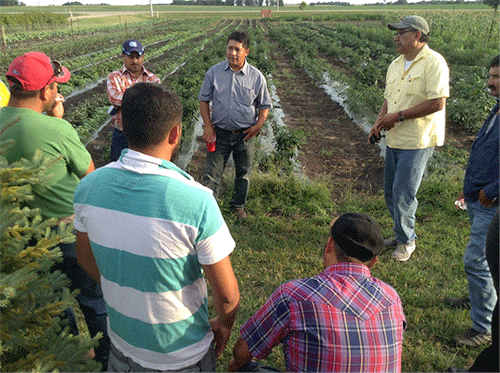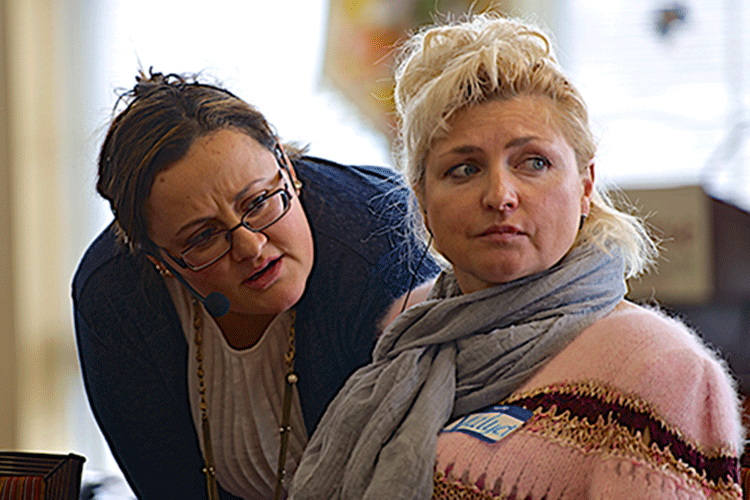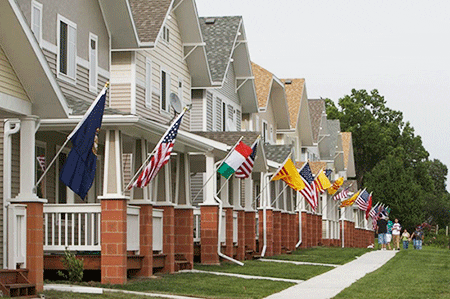The story of neighborhood populations changing with waves of migrants is a classic part of the history of American cities. We are, as most school children have heard, a nation of immigrants—some voluntary, some involuntary, some driven by persecution, some lured by opportunity.
When I lived in the Washington Heights neighborhood of Manhattan I was one of very few non-Spanish speakers in my building. But there was a mezuzah (a scroll of Jewish scripture that is nailed to a home’s door frame) under several layers of paint by my apartment’s front door, a reminder of how the neighborhood had hosted different waves of immigrants over time.
Whether newly arrived, or moving within the country, new arrivals to a city often cluster in one place. This too is sometimes voluntary, for social networks and familiarity, and sometimes horrifically involuntary, as with the violence that enforced the ghettos in northern cities during the great northern migration of African Americans fleeing Jim Crow.
In any case, the movement continues today, whether it’s Latin American children fleeing gangs, U.S. cities welcoming refugees from overseas, or longer-established immigrant communities moving within the country, sometimes displaced from historic urban neighborhoods to suburbs and sometimes following jobs into the heartland.
Large immigrant populations are no longer the province of major coastal cities. Community development groups located anywhere are likely to have at least some recent immigrants within their constituencies, and in some cases might be seeing the demographics of their neighborhoods shifting significantly. This can bring new challenges: Adding services in other languages. Understanding how federal immigration policy and citizenship status affect members/constituents. Addressing a need for new kinds of financial services and even new building plans. Developing new cultural competencies.
At a conference last year I spoke with a woman who headed an agency in an older upstate New York city that helped people attain homeownership. She spoke of challenges within her city’s refugee community when it came to homeownership, in which social divisions that existed in people’s home countries affected their ideas of who could and should become an owner of property here. These are the kinds of things that can take a community-based organization by surprise if it has not thought of immigration as relevant to its work, or thought about cultural competency as a capacity it needs to develop.
A few years ago we published a wonderful article based on research by James DeFilippis and Benjamin Faust on New York City CDCs and how they have adapted—or didn’t—to changing demographics in their neighborhoods. They found that while some organizations adapted and others partnered, some remained in denial about the changes occurring around them.
This issue of Shelterforce is something of a follow-up to that article. In it we have collected some introductions to the context of immigration patterns in the United States, and then explored some of the ways in which the community development field is encountering and addressing immigration issues explicitly, from citizenship loans to partnerships among different ethnic-focused organizations to supporting immigrant entrepreneurs to going multilingual.
We are also excited to have another article in our economic development series that explores the question of whether organizations that are supporting economic development, through lending or technical assistance or planning, can weigh in about the quality of the jobs created in the projects they support. This is a subject that is not well trodden outside the community benefits agreement world, and not a simple one, but I see some promise in the ways organizations are thinking about the question. Our gratitude goes to the Surdna Foundation for supporting this exploration.
And finally, in this issue we are pleased to introduce the New Frontiers in Community Development series, sponsored by Citi (and independently reported, of course). Whether it’s an individual counseling relationship, an organization-wide strategy, or a regional economic model, the community development field is facing questions of scale, sustainability, and how to work with new allies and partners. Over the coming year, the New Frontiers series will be exploring aspects of the changing landscape that faces our readers at all of those levels—from the specific challenges facing housing counseling agencies as the surge of housing crisis–related funding abates, to the nitty gritty of new CDC business models, to the ways municipalities can turn their thinking about economic development on its head and meaningfully support “new economy” models that rest on community ownership and investment. We’re excited about the conversations we expect to start, and hope you will join in.





Comments